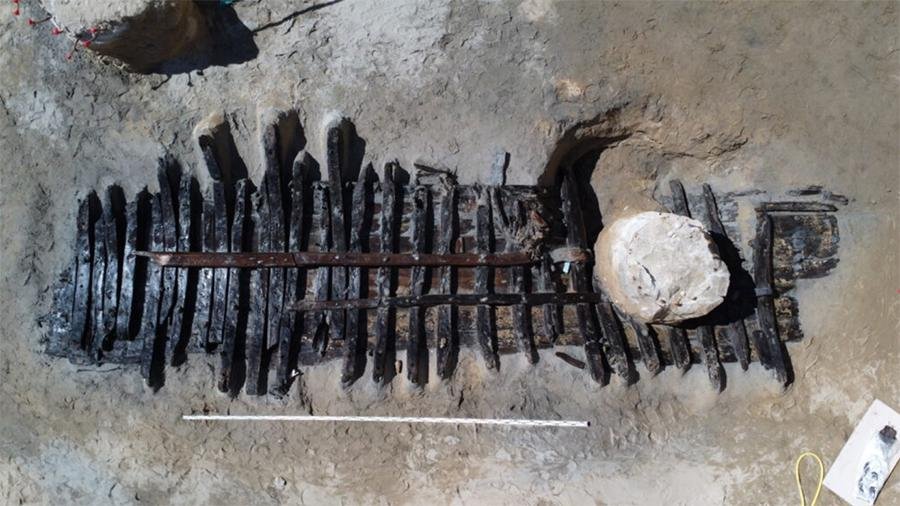Archaeologists in Barcelona have discovered a well-preserved medieval ship during excavation operations near Ciutadella Park, shedding light on the city’s maritime history. The “Ciutadella I” was discovered about 18 feet (5 meters) below ground level in the area of the former Mercat de Peix (fish market), which is being redeveloped into a hub for science and innovation research.
 500-year-old medieval shipwreck unearthed in Barcelona. Credit: Barcelona City Council
500-year-old medieval shipwreck unearthed in Barcelona. Credit: Barcelona City Council
The ship is approximately 33 feet (10 meters) long and 10 feet (3 meters) wide. Its structure, consisting of over thirty curved wooden ribs and a minimum of seven hull planks, shows a form of construction known as skeleton construction, which was common all over the Mediterranean in the late Middle Ages.
Archaeologists estimate the ship to be from the 15th or early 16th century, when Barcelona was undergoing considerable coastal and maritime transformations following the construction of the city’s first artificial docks in 1439.
Santiago Palacios, the principal archaeologist, described the discovery as “exceptional.” He was adamant that although the site was underwater at the time, it would have been unlikely that the vessel sank there during a storm, but rather that it had been carried onto the site by shifting sands and coastal changes.
 Overhead view of the ship. Credit: Barcelona City Council
Overhead view of the ship. Credit: Barcelona City Council
The fragile remains, highly preserved over centuries under sediments, are now being carefully conserved. To avoid quick decay after the ship was exposed to the air, archaeologists are keeping part of it in sand and have begun detailed 3D pH๏τogrammetry documentation. Individual timbers will be removed later and treated with polyethylene glycol, a water-soluble wax that replaces the moisture in wood to preserve it for long durations.
Other than the Ciutadella I, the excavation has revealed structures dating from a variety of other eras, including a Spanish Civil War air raid shelter, the remains of the 18th-century Ciutadella fortifications, and traces of the 19th-century fish market. This is only the second time a seagoing vessel has been found in Barcelona—the first being the Barceloneta I in 2008 near the Estació de França.
Researchers look forward to further study of Ciutadella I, including the analysis of its wood and resin, to learn more about medieval shipbuilding techniques and perhaps discover where the vessel was constructed.
More information: Barcelona City Council Archaeology Service





